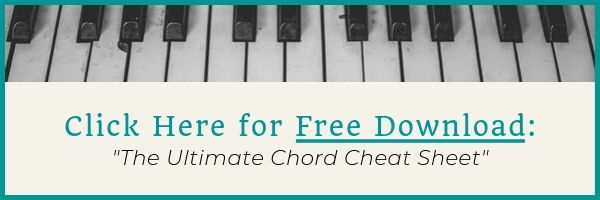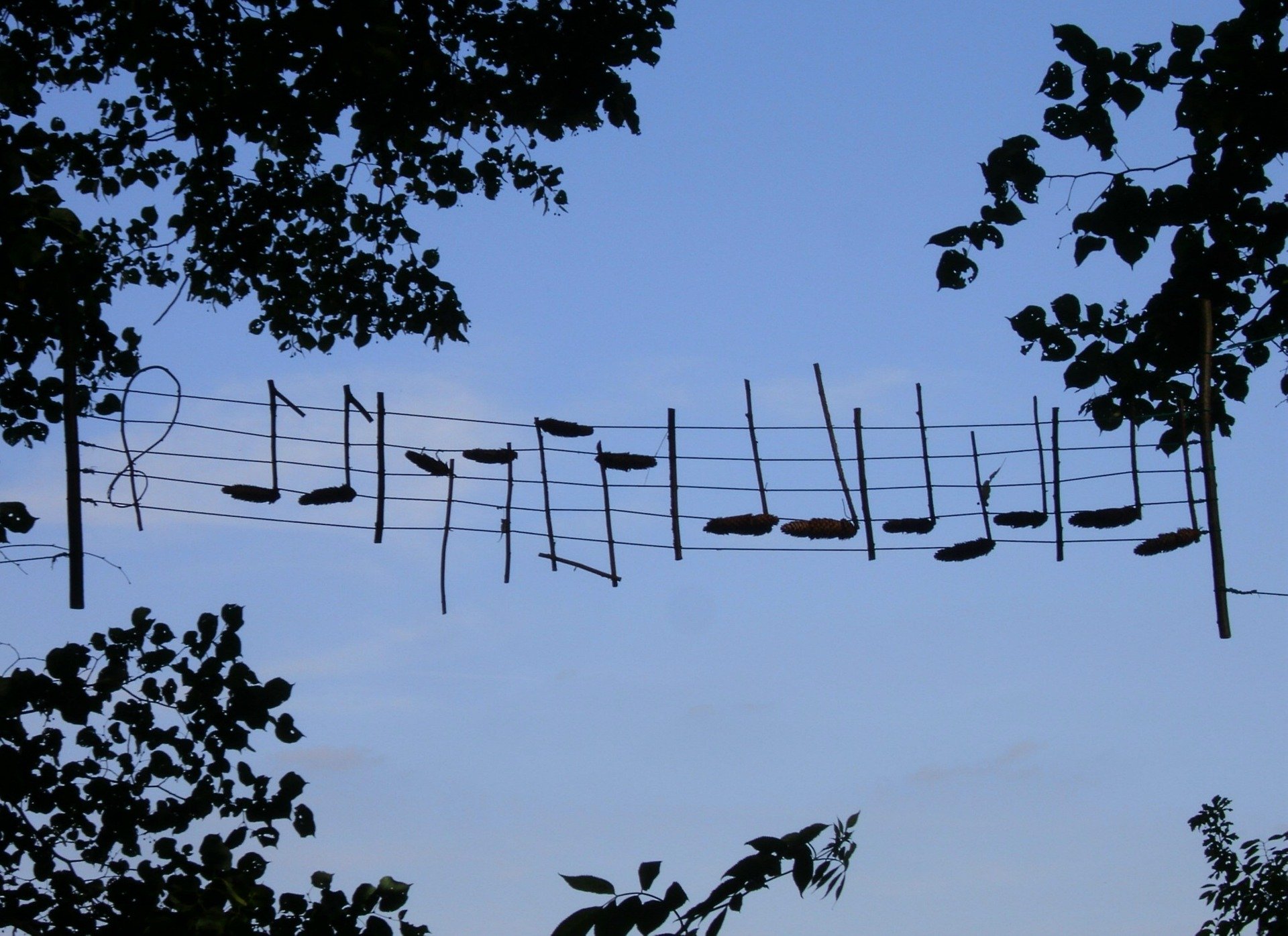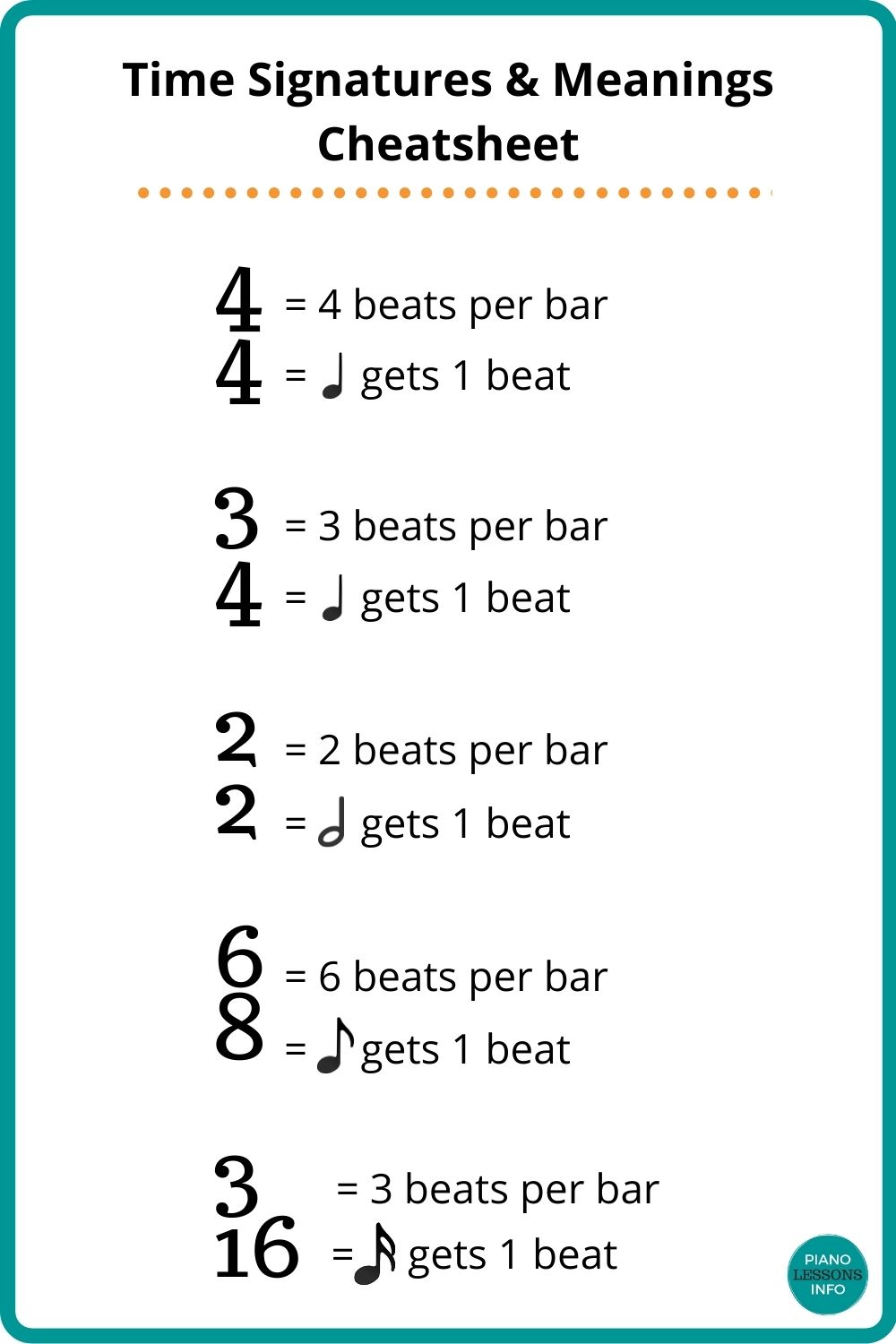Rhythm Patterns for Piano Chords
When first learning chords, it's really great to start adding in some rhythm patterns for piano chords.
Rhythm patterns are not really something you need to learn and continue to play exactly, but something to give you ideas and foundations into what you're playing.
So that's what we'll do for you here today. Give you some simple and easy foundational rhythm patterns to start you off and get you playing things differently.
This is really the first lesson in my Rockin' Rhythms for Piano Chords Course which is found in the Piano Chords Club. (If you really want to work on this, there are A LOT of different types of rhythm patterns there.)
The 2 Ways You Can Learn Rhythm Patterns for Piano Chords
There are two main ways you can learn to play rhythm patterns for chords.
1. Learn the patterns as is.
You can take a pattern, learn it, practice it and play it exactly as is. This can be a great way to go and get you started on sounding more rhythmical.
The trouble with this approach is that it does take some background knowledge - like how to count in music - and it is a very structured approach. This works very well for some people and not at all for others. But that's okay! There is another approach you can take.
2. Learn the concepts behind the patterns.
If reading and playing a pattern exactly as is doesn't really work for you, what can be equally useful and beneficial is to understand why we're playing a specific pattern and what it is we're working on.
Then you take that information or concept, and apply it to your piano chords. Take and try! Experiment. This is also a very useful way to approach rhythm patterns.
Below, I'm going to give you actual rhythm patterns but also explain what we're doing so that you can use whatever approach works for you.
Do You Understand Time Signatures or How To Count Beats?
One of the ways we need to explain rhythm patterns is by counting them out. To do this, it's quite useful to have at least a basic understanding of both time signatures (which let us know how far to count) and also how to count beats in music.
If you're not sure what either of those are, it could be worth taking a quick peak before trying to learn the rhythm patterns.
Understanding time signatures.
Video Tutorial: Rhythm Patterns for Piano Chords
Piano Chords Rhythm Patterns
The most basic of all rhythm patterns and the foundation for the others here is likely a rhythm pattern you're already playing: playing on the beat for every beat.
What does playing on the beat mean? Playing a chord on every number we count. We're going to count to 4 so that means playing a chord on 1, 2, 3, 4.
For example, if we had a chord progression on G D Em C, we'd play G on beats 1, 2, 3, 4 and then play D on 1, 2, 3, 4 and so on.
This is a good strong steady beat to start us off.
I'm going to write out the rhythm patterns using these numbers plus LH for left hand and RH for right hand.
This first one I'm referring to would be:
RH: 1 2 3 4
LH: 1 2 3 4
We'd play both hands at the same time.
Let's Remove Some of These Notes Now
What we're going to do now, is start removing parts for our foundational rhythm pattern above.
The pattern we'll use now will have less left hand but still give us a strong, steady beat.
RH: 1 2 3 4
LH: 1
So, only play your left hand on beat one but your right hand is still playing on all 4 beats.
Alright, let's move on to more interesting patterns now that we have the basics down.
Taking Out Different Beats to Create Rhythm Patterns
We know there are 4 beats and we've been playing all of them or maybe you've even been playing the first of the 4 and that's it. But either way, what we can start doing is removing different beats to create different sorts of rhythms.
Taking Out Beat 2
With our next pattern, we're going to remove beat 2. That would look like this:
RH: 1 3 4
LH: 1
Give it a try and see if you like how it sounds. Choose any chord you like and play that chord on all the beats above. Then switch to another chord (in the same key).
Chord progression you can try this with:
C Am F G
Taking Out Beat 3
The next thing we can do is take out beat 3.
RH: 1 2 4
LH: 1
Beat 3 is one of the strong beats so this will definitely alter the feel of what you're playing.
An alternative here would be:
RH: 1 2 4
LH: 1 3
It's at this point that you may realize how structured this can be.
If this way of learning to play rhythm patterns for chords isn't really working for you, take this concept of not playing all the beats and try experimenting with that.
Taking Out Beat 4
Not playing anything can also be a nice sound. It can give more strength to beat 1 - the strongest of the beats. It also gives you time to move to another chord if you need that.
RH: 1 2 3 __
LH: 1
What Not To Do
You can experiment with removing beats, adjusting patterns, combining them but there's one thing I'd recommend against:
Don't take out beat 1.
Beat one is our strong beat and it helps give us our sense of the beat for a song. So keep that one in (at least for now).
Rhythm Patterns for Chords - Next Steps
Now that you have a few variations you can play, it's time to mix and match!
Take these basics and do any of the following:
- try a pattern in your right hand and then switch it up and see what it's like in your left hand
- try combining 2 patterns to make one pattern (like remove beat 2 then beat 4)
- try filling in a few notes here and there between the beats (just use a single note from the chord)
- play the rhythm pattern in your left hand while trying out a melody in your right hand
- experiment with adding beats or notes in between the beats of the basic rhythm patterns
Overall, you want to take this information and try it out. Get comfortable with it and then move on to the next rhythm patterns.
Take The 12 Essential Rhythm Patterns for Rockin' Piano Chords Course
The special thing about rhythm and rhythm patterns is that they bring interest and feeling to music. Rhythm lets your music become 'more". And it can also be really fun to play all sorts of rhythms!
To continue learning a variety of rhythm patterns including:
- rhythms to make your slow songs sound beautiful
- create action and intensity with fast rhythm patterns
- know where to put your accents (loud notes)
- put feeling into your music by building and calming it back down
- tips for staying in time
- patterns for on and off the beat
- syncopated rhythms for piano chords
- rhythm patterns for broken chords
This 6 part mini course is part of this Piano Chords Club and you can take it and other mini piano chords courses there.
-->> Join the Piano Chords Club Here <<--
Free Download:
Ultimate Chord Cheat Sheet

Subscribe below and get free access to the (printable) Ultimate Chord Cheat Sheet.
Recent Articles
-
Piano Notes Chart
Nov 20, 23 10:21 PM
Find a piano notes chart for treble clef and bass clef notes as well as the different types of notes. -
D Chord on Piano + Diagram, How To & Theory
Oct 24, 23 12:20 AM
Learn how to play the D chord on piano with diagram, fingering, D/A, D/F# and a theory explainer. -
Diminished Piano Chords: Chart & How to Make Them
Oct 09, 23 09:23 PM
Learn the different diminished piano chords and how to make them. Here you'll find both a diminished chord chart and an explanation.
Free Download:
Ultimate Chord Cheat Sheet

Subscribe below and get free access to the (printable) Ultimate Chord Cheat Sheet.










